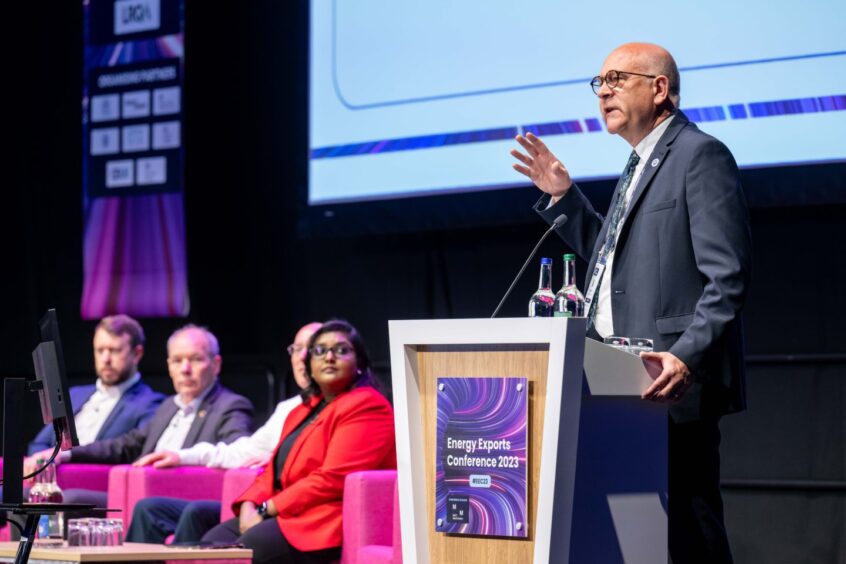
I’m travelling again but my reasons for travel have changed. As CEO of the Energy Industries Council (EIC), with 950 member companies around the world, I used to travel to check in on our global members and EIC teams. Now my travel priorities have changed.
Firstly, after years of COVID isolation and siloed team tendencies, I prioritise #teamEIC’s 140 amazing staff, located in eight global energy hubs, to feel part of one larger whole, living by EIC’s culture, values and behaviours.
Secondly, I ensure EIC’s vision is crystal clear and lands well with all our key stakeholders, critical in these times of complex opportunity.
Thirdly my new reason; a strong urge to ‘situation sense’ what each country, and company, around the world is doing to meet its net zero commitments. After grappling with net zero, and competing challenges like COVID, wars, inflation, US-China tensions, we accept that net zero ambition is not the same as net zero reality.
Taking our staff knowledge and marrying this with our market intelligence helps bolster this global picture.
EIC tracks 14,500 capex projects globally, across all energy sectors, including tracking the point when each project reaches final investment decision (FID), when projects will cascade into the supply chain.
It turns out that FID rates really help to explain the divergence between net zero ambition and reality.
For example, the highest global FID rates are, surprisingly, for large new nuclear, with nearly half of projects currently announced already being at FID.
China takes the majority, but nuclear is rebounding in other countries, as taxonomy changes reclassify nuclear as clean, providing policy makers with compliant, large-scale, non-intermittent, grid-friendly low carbon power.
Oil & gas. More than 30% of announced upstream projects are at FID, up from 20% a year ago, as markets autocorrect after COVID and ten years of under investment, explaining why many supply chain companies with global footprints have a skip in their step. Midstream, including LNG, and downstream are also high at 20% FID rates.
The largest renewable sector is fixed offshore wind, with $2 trillion in announcements, but only 5% have reached FID. $99bn is depressingly low, but higher costs of capital put paid to already low margins.
With governments unwilling to heavily subsidise offshore wind, the sector is likely to move from record-high installations this year globally, to starkly lower installations in the near future.
Hydrogen also lags at just 3% of $1 trillion of announced projects at FID, skewed by just one giga-sized project, NEOM in Saudi Arabia.
Any good news for net zero? Biomass/sustainable aviation fuel (SAF) reaches 14% FID rates, bucking the trend, with demand heavily outstripping supply.
SAF is a confounding market that many are now circling, to find ways to rapidly grow supply, using existing infrastructure which makes it more economical and scalable at pace.
Currently though, only 0.5% of the world’s current demand for jet fuel can be met by 100% of the world’s current SAF supply capacity. This is a ready-now opportunity.
I’m also excited by carbon capture and storage. Although a smaller market than offshore wind, at just $200bn, 6% of it has already reached FID, up from 3% last year.
So yes, in FID percentage value terms, carbon capture has overtaken offshore wind. This pivot has happened surprisingly quickly and reflects the world’s increasing acceptance that emission prevention is going too slowly, with net zero commitments likely to be missed by many years, unless government and company strategies change, to focus instead on emission capture and storage.
While you contemplate the impact on net zero realities from these FID stats, perhaps a good way to learn more is to meet representatives from the 20 or so international delegations coming to the Energy Exports Conference on 11-12 June at P&J Live in Aberdeen – you’ll learn that each country is having to plot its own
unique pathway to net zero, and each country needs to collaborate with the supply chain, and other partners, to have a chance of success.
Register to attend for FREE at www.the-eic.com/EEC
Stuart joined the Energy Industries Council (EIC) as CEO in 2016, after a 25-year career leading global businesses in oil & gas, power, renewables and defence. Winner of the 2023 ‘King’s Award for International Trade’, and the 2023 OWI ‘Market Intelligence Platform of the Year’, the EIC is energy agnostic and the world’s fifth largest energy trade association with nearly 1,000 member companies. Stuart is author of the Survive & Thrive annual report which highlights preferred growth strategies in tough markets and is architect of the Energy Exports Conference (EEC) and the World Energy Supply Chain Awards (“the WESCAs”).
Recommended for you
